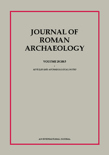
Journal of Roman Archaeology
Scope & Guideline
Advancing Knowledge in Archaeology and Classics
Introduction
Aims and Scopes
- Interdisciplinary Approaches to Roman Society:
The journal emphasizes interdisciplinary research that combines archaeology, history, art history, and anthropology to provide a holistic understanding of Roman culture and its complexities. - Material Culture Studies:
A core focus is on the analysis of material culture, including artifacts, architecture, and urban planning, which are essential for understanding the daily lives and practices of ancient Romans. - Cultural Interactions and Exchanges:
The journal often explores themes of cultural interactions, trade, and the diffusion of ideas across the Roman Empire, highlighting how these dynamics shaped local and imperial identities. - Technological Innovations in Archaeology:
It showcases the use of modern technologies such as GIS, remote sensing, and 3D modeling in archaeological research, enhancing the study of Roman landscapes and structures. - Contextual Archaeology:
The journal promotes studies that place archaeological findings within broader historical, social, and environmental contexts, offering insights into the complexities of Roman life.
Trending and Emerging
- Gender and Space in Roman Society:
There is an increasing interest in exploring gender dynamics, particularly how space was utilized and perceived by different genders in Roman domestic and public settings. - Environmental Archaeology:
Studies examining the relationship between ancient Romans and their environment, including climate impact and resource management, have gained traction, reflecting a broader concern with sustainability and ecological history. - Digital Archaeology and Visualization:
The integration of digital tools and methodologies, such as virtual reconstructions and GIS mapping, has become a prominent theme, enhancing the analysis and presentation of archaeological findings. - Social Practices and Everyday Life:
Research focusing on the daily lives of ordinary Romans, including practices related to food, health, and community, is emerging as a significant area of interest, offering insights into the social fabric of Roman society. - Cultural Heritage and Preservation:
There is a growing emphasis on the preservation of archaeological sites and the ethical implications of heritage management, reflecting global concerns regarding cultural heritage in the face of modernization and conflict.
Declining or Waning
- Traditional Epigraphy and Inscriptions:
Research focused solely on inscriptions and epigraphy has been less frequent, as scholars increasingly seek to integrate these studies with broader archaeological and historical contexts. - Roman Military Studies:
While military archaeology remains important, the volume of papers specifically dedicated to traditional military studies has decreased, with a shift towards examining broader social and economic aspects of Roman military life. - Static Historical Narratives:
There has been a move away from purely narrative-based historical accounts of Roman events, favoring analyses that incorporate archaeological data and interdisciplinary perspectives. - Focus on Elite Culture:
Research centered on elite Roman culture and art has waned, giving way to studies that prioritize the experiences and contributions of marginalized groups within Roman society.
Similar Journals
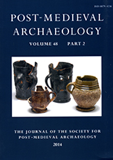
Post-Medieval Archaeology
Connecting Artifacts to Historical NarrativesPost-Medieval Archaeology is a distinguished academic journal published by ROUTLEDGE JOURNALS, TAYLOR & FRANCIS LTD, focusing on the rich tapestry of human history from the post-medieval period through the lens of archaeology. With a proud publication history spanning since 1967, this journal addresses the integration of archaeological findings with historical narratives, contributing significantly to the field of archaeology and history. The journal holds an impressive categorization within the Q2 and Q3 quartiles for Archaeology and History in 2023, showcasing its commitment to academic excellence and relevance within these disciplines. Researchers and professionals alike will find value in its critical examinations and innovative methodologies that illuminate the past, making it a pivotal resource for those engaged in archaeological research. As an essential platform for scholarly debate and dissemination, Post-Medieval Archaeology continues to advance the understanding of post-medieval contexts and material culture, fostering discussions that resonate through various areas of the arts, humanities, and social sciences.
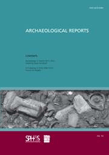
Archaeological Reports-London
Transforming Discoveries into Scholarly DiscourseArchaeological Reports-London, published by Cambridge University Press, is a prominent journal dedicated to advancing the field of archaeology, encompassing a comprehensive range of studies that delve into the rich tapestry of human history from prehistory to modern times. With an ISSN of 0570-6084 and an E-ISSN of 2041-4102, this journal has been a significant source of scholarly articles since its inception in 1955, serving as a crucial platform for researchers and academics alike. The journal is categorized in the third quartile for Archaeology and Arts and Humanities, and holds a prestigious position in the first quartile for Classics, reflecting its vital role in the scholarly community. With its esteemed ranking of Rank #45/170 in Classics and Rank #210/413 in Archaeology, it provides unparalleled insights and findings that shape contemporary archaeological discourse. Although not an open-access publication, the journal remains key for those who seek to enrich their understanding of archaeological practices and heritage conservation. Engage with Archaeological Reports-London to explore cutting-edge research that illuminates our understanding of past civilizations and informs future directions in the field.

Deltion of the Christian Archaeological Society
Bridging Disciplines: Understanding Faith Through ExcavationDeltion of the Christian Archaeological Society (ISSN: 1105-5758, E-ISSN: 2241-2190), published by the Christian Archaeological Society in Athens, Greece, stands as a pivotal source of scholarly work within the realm of Christian archaeology. This journal is dedicated to disseminating high-quality research that promotes the understanding of Christian history, heritage, and archaeological practices. Though it operates under traditional access options, it provides a comprehensive platform for researchers and professionals alike, fostering dialogue and collaboration within the archaeological community. With a commitment to advancing knowledge, the Deltion aims to support both established scholars and emerging voices, reinforcing the significance of archaeology in interpreting religious narratives and cultural contexts. Researchers, students, and professionals interested in the intersections of archaeology, history, and theology will find this journal an invaluable resource in their scholarly pursuits.

Lanx-Journal of the Scuola di Specializzazione in Archeologia of the University of Milan
Pioneering new insights in the field of archaeology.Lanx-Journal of the Scuola di Specializzazione in Archeologia of the University of Milan, published by Milano University Press, is a distinguished platform dedicated to the field of archaeology. Committed to advancing archaeological research and scholarship, this Open Access journal has been available to the global academic community since 2008, facilitating easy dissemination of innovative ideas and findings. With a strong emphasis on promoting interdisciplinary dialogue, the journal covers a wide range of topics from classical archaeology to contemporary practices, making it an invaluable resource for researchers, professionals, and students in the field. Situated in the historic city of Milan, it aims to contribute to the preservation and understanding of cultural heritage through rigorous academic inquiry and collaboration.

Archaeologia Baltica
Fostering Dialogue on Cultural HeritageArchaeologia Baltica, published by the Institute of Baltic Region History & Archaeology at Klaipeda University, stands as a premier platform in the field of archaeology, with a specific focus on the Baltic region. This esteemed journal, which boasts a Q1 ranking in both the Arts and Humanities and Archaeology categories as of 2023, serves as a critical resource for scholars, researchers, and students dedicated to the exploration of archaeological horizons. Featuring an array of original research articles, reviews, and theoretical discussions, it aims to advance knowledge and foster dialogue in the diverse fields of archaeology. Though currently not an open-access publication, Archaeologia Baltica enjoys a commendable position in the Scopus rankings, underscoring its importance in shaping contemporary archaeological discourse. The journal not only reflects rigorous academic standards but also invites contributions that encourage collaborative efforts in the study of our shared cultural heritage.

LATOMUS
Advancing Knowledge in Classics and BeyondLATOMUS is a distinguished academic journal published by Peeters in Belgium, offering a rich platform for scholarly discourse in the fields of Classics, Archaeology, History, Literature, and Linguistics. With the ISSN 0023-8856 and E-ISSN 2294-4427, it has established itself as an essential resource for researchers and professionals seeking to contribute to and engage with critical debates within these disciplines. While not an Open Access journal, LATOMUS is recognized for its robust impact in the academic community, achieving Q2 and Q3 rankings across various categories, including Classics and Archaeology, according to the latest 2023 evaluations. The journal publishes articles that span a range of topics relevant to antiquity and its influences, making it a vital resource for those exploring historical narratives and linguistic developments. As a publication dedicated to advancing scholarly knowledge since its inception in 1971, LATOMUS continues to serve as a cornerstone of academic inquiry within the humanities, promoting intellectual engagement and disseminating high-quality research in its converged years from 1971 to 1974, 1980, and from 2002 to the present.
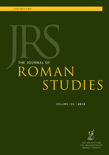
JOURNAL OF ROMAN STUDIES
Exploring the Depths of Roman CultureThe JOURNAL OF ROMAN STUDIES, published by Cambridge University Press, is a prestigious academic journal dedicated to the exploration of the Roman world through archaeological, historical, and literary lenses. With a rich publication history dating back to 1911, this journal has established itself as a leading platform for groundbreaking research in the fields of Classics, History, and Visual Arts, holding Q1 rankings in multiple categories as of 2023. Scholars from around the globe rely on its rigorous peer-reviewed articles to inform their work and advance the understanding of Roman culture and society. Although it operates under a traditional access model, the journal's impact factor and broad bibliographic reach ensure that it remains an invaluable resource for researchers, students, and professionals alike. With its continued commitment to excellence, the JOURNAL OF ROMAN STUDIES not only contributes to academic discourse but also invites new insights into the timeless relevance of Roman studies.

Palaeohispanica-Revista sobre Lenguas y Culturas de la Hispania Antigua
Decoding the Legacy of Hispania's Ancient VoicesPalaeohispanica-Revista sobre Lenguas y Culturas de la Hispania Antigua is a distinguished academic journal dedicated to the study of ancient Spanish languages and cultures. Published by the INST FERNANDO CATOLICO in Spain, this journal serves as an essential platform for scholars and researchers exploring the rich historical and linguistic heritage of Iberia. With a specific focus on the intersections of archaeology, history, linguistics, and cultural studies, Palaeohispanica has garnered substantial recognition, reflecting its commitment to high-quality research as evidenced by its rankings in prominent Scopus categories, reaching the 80th percentile in History and the 69th in Archaeology. While the journal operates without an Open Access option, it continues to contribute significantly to the academic discourse surrounding ancient Hispania from 2019 to 2023, ensuring that vital research is accessible to a discerning audience. As a Q3 and Q2 ranked publication in various relevant categories, it is an invaluable resource for professionals, researchers, and students eager to delve into the complexities of ancient languages and cultures.

Veleia
Unveiling Interdisciplinary Narratives in History and ArtVeleia is a distinguished academic journal published by the Universidad del País Vasco, specifically from the Department of History, Art, and Music. This journal serves as a vital platform for the dissemination of scholarly research in the fields of history and archaeology, with a particular focus on the cultural and historical narratives of the Basque region and beyond. With a commitment to academic rigor, Veleia facilitates the exchange of innovative ideas and methodologies among researchers, professionals, and students alike. Although currently not open access, the journal aims to contribute significantly to its field by promoting interdisciplinary dialogue and fostering a deeper understanding of historical contexts. By publishing high-quality, peer-reviewed articles, Veleia plays a crucial role in advancing the academic discourse surrounding history and the arts in contemporary scholarship.
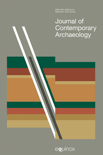
Journal of Contemporary Archaeology
Connecting Historical Narratives with Contemporary IssuesJournal of Contemporary Archaeology, published by EQUINOX PUBLISHING LTD, is an esteemed peer-reviewed journal dedicated to advancing the field of archaeology through the exploration of contemporary issues, innovations, and methodologies. Since its inception in 2014, the journal has become a vital platform, fostering interdisciplinary dialogue and scholarly communication among researchers, professionals, and students alike. With a notable Q2 ranking in both the Archaeology and Arts and Humanities categories, it is recognized for its significant contributions to the academic discourse and its commitment to rigorous scholarly standards. The journal is indexed in Scopus, ranking in the 76th percentile within the Arts and Humanities and the 73rd percentile within the Social Sciences. By providing a comprehensive and open-access approach to archaeological studies, the Journal of Contemporary Archaeology is poised to facilitate exploration and understanding of the dynamic relationships between past cultures and contemporary society. Researchers are encouraged to engage with and contribute to this influential journal based in the United Kingdom.